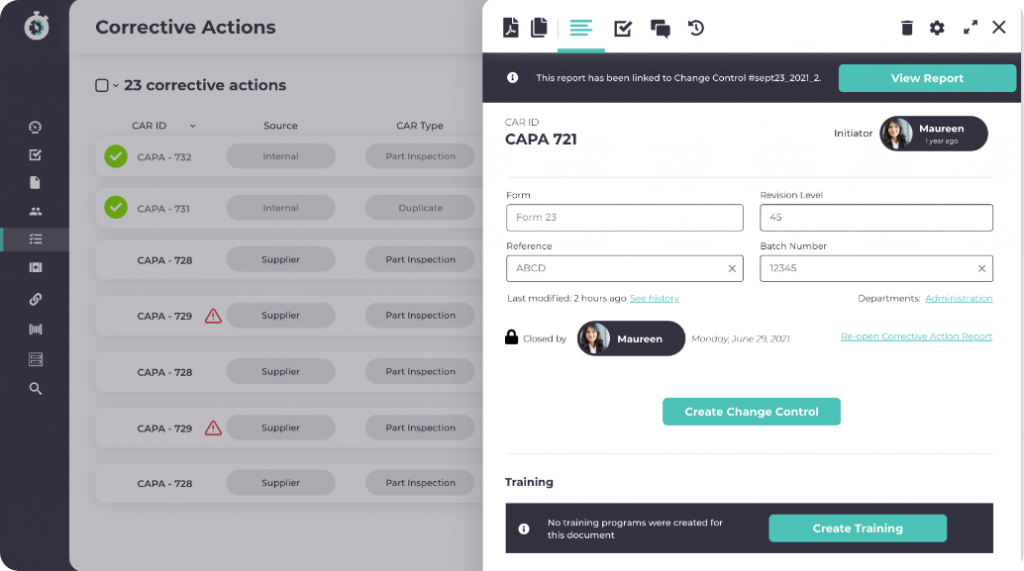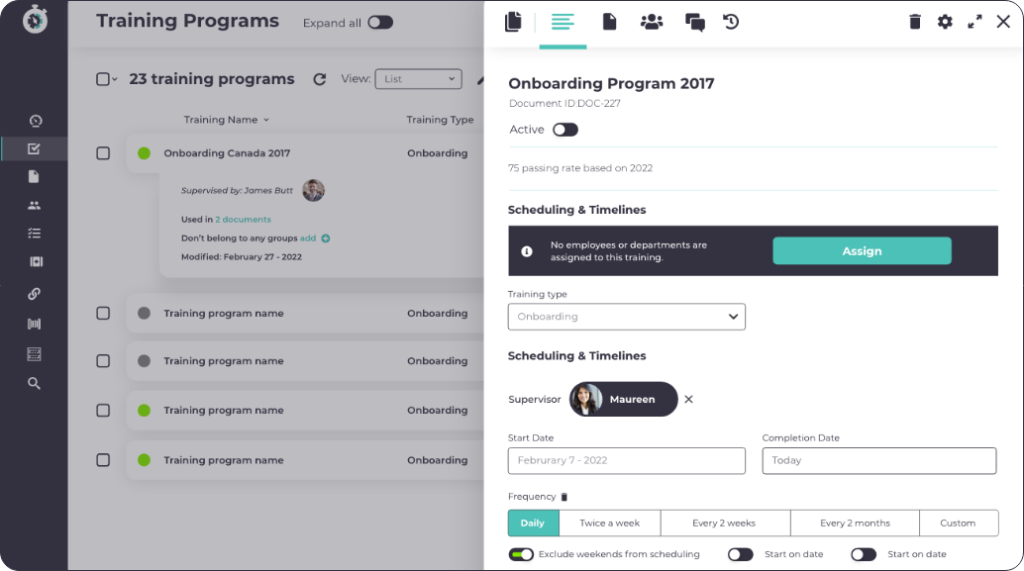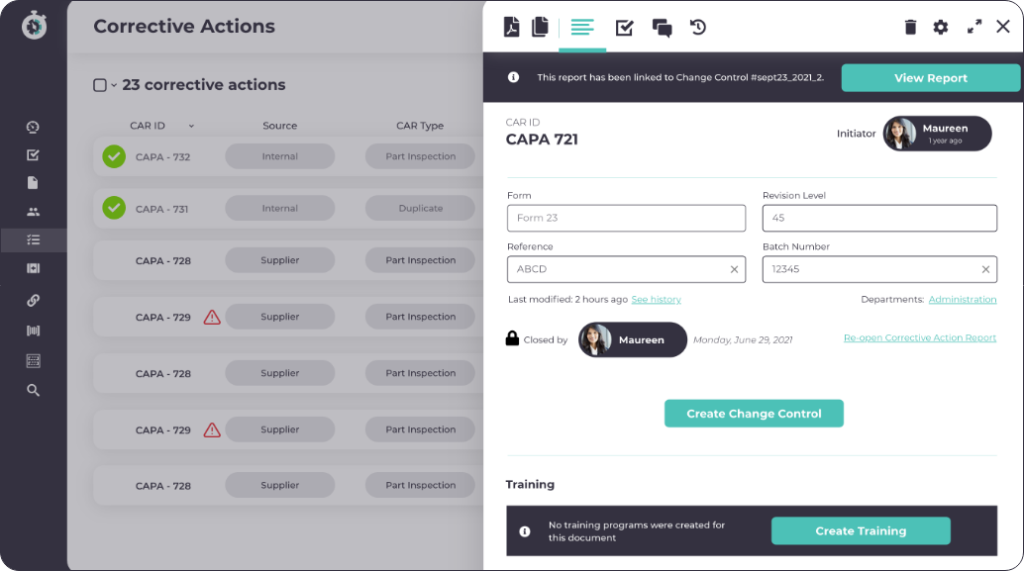The health and safety of employees must always be prioritized in the hectic workplace of today. This commitment aligns with both industry standards and governmental regulations, as well as moral commitments. As such, Enterprise Incident Management (EIM) becomes a key element of this overarching commitment.
In this post, we will delve into what EIM is and why it’s important. Additionally, we’ll explore the specific requirements set forth by ISO 45001:2018 and OSHA. We’ll also examine the essential components of a Quality Management System (QMS) required to comply with these standards. Finally, we’ll demonstrate how Isolocity can effectively assist you in achieving and maintaining compliance.
In addition to reading, you can watch this blog about Enterprise Incident Management too!
Enterprise Incident Management: What is it?
Enterprise Incident Management (EIM) is an organized method for locating, notifying, looking into, and reducing the impact of incidents that happen within an organization. Accidents at work, environmental problems, and even information security breaches can all be considered incidents. EIM is essential for preserving a healthy and safe work environment and reducing operational risks.
Enterprise Incident Management: Its Importance
1. Employee Safety:
First and foremost, any organization’s main priority should be the welfare of its workers. EIM aids in incident prevention and promotes employee safety at work. By swiftly identifying and addressing potential hazards, organizations can create a safer working environment.
2. Regulatory Compliance:
It’s critical to follow regulations and standards that are relevant to your sector. If the business fails to follow relevant compliances, the business could face huge fines, legal actions, as well as a bad reputation in the market. For example, WorkSafeBC fined Northern Health $355,249 for persistently neglecting to carry out workplace investigations pertaining to safety at Peace Villa. Therefore, EIM ensures that an organization remains in compliance with all applicable regulations, protecting it from legal and financial consequences.
3. Operational Efficiency:
Furthermore, organizations can avoid disruptions to their operations and boost efficiency and productivity by quickly identifying and addressing problems. When incidents occur, a well-implemented EIM system allows for a streamlined response, minimizing downtime and ensuring that operations continue smoothly. Consequently, EIM contributes to overall operational efficiency and helps maintain a competitive edge in the market.
ISO 45001:2018
ISO 45001:2018 is an international standard that outlines the requirements for an occupational health and safety management system. It provides a basic framework to proactively manage workplace safety and health risks. Some of the main guidelines are:
Leadership and Worker Involvement:
Organizations should involve both management and employees in safety and health initiatives.
Risk Assessment:
Identify, assess, and mitigate risks associated with workplace incidents.
Incident Reporting and Investigation:
Establish processes for reporting, investigating, and taking corrective actions on incidents.
OSHA (Occupational Safety and Health Administration)
OSHA is the federal agency responsible for enforcing safety and health regulations in the United States. The purpose of OSHA regulations is to ensure a secure and healthy workplace for employees. OSHA’s most important guidelines consist of:
Hazard Communication:
Employers must inform employees about the hazards present in the workplace and provide appropriate training.
Personal Protective Equipment (PPE):
Employers must provide and ensure the use of PPE when required.
Emergency Action Plans:
Establish plans for emergency situations and conduct regular drills.
Elements of a QMS for ISO 45001:2018 and OSHA Compliance
To cater to ISO 45001:2018 and OSHA guidelines, your Quality Management System (QMS) should include the following elements:
Document Control:
Maintain proper records of safety procedures, incident reports, and employee training.
Risk Assessment:
Implement processes to identify, assess, and mitigate risks.
Incident Management:
Develop a robust incident reporting and investigation system.
Training and Competency Management:
Ensure employees are well-trained in safety protocols.
Emergency Response:
Establish clear plans and procedures for emergency situations.
Isolocity: Your Compliance Partner
Isolocity is a comprehensive compliance management software designed to streamline ISO 45001:2018 and OSHA compliance efforts. It offers the following benefits:
Efficient Incident Management:
Isolocity helps you manage incidents from reporting to resolution, ensuring compliance with ISO 45001:2018 and OSHA. Through our CAPA module, you can initiate all corrective and preventive actions.
Document Control:
Maintain all your compliance documents in one secure location for easy access and management.

Risk Assessment:
Identify and assess risks, enabling proactive risk mitigation.
Employee Training:
Track and manage employee training to ensure everyone is up to date with safety protocols.

Real-Time Reporting:
Generate real-time compliance reports to monitor your organization’s performance.
Conclusion
Everyone deserves a safe work environment and therefore it should be the number one priority for all businesses. Unfortunately, data tells a different story. The International Labour Organization (ILO) estimates that approximately 2.3 million women and men die annually from work-related accidents or diseases; this equates to over 6000 fatalities per day. Worldwide, there are around 340 million occupational accidents and 160 million casualties of work-related illnesses annually.
Every incident should be scrutinized. What is a near miss today, can be a fatal incident tomorrow. Therefore proper incident management is extremely crucial.





